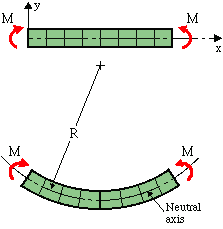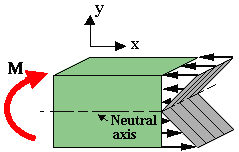Moment-Shear-Load | Beam Bending | Bending Stress


| 6.2 Bending in Beams Moment-Shear-Load | Beam Bending | Bending Stress |


|
|
» Beam Bending
|

|
|
» Bending Stress
By applying the equilibrium conditions and making a couple of simple substitutions, BENDING STRESS can be given as: |

|
|

|


 |